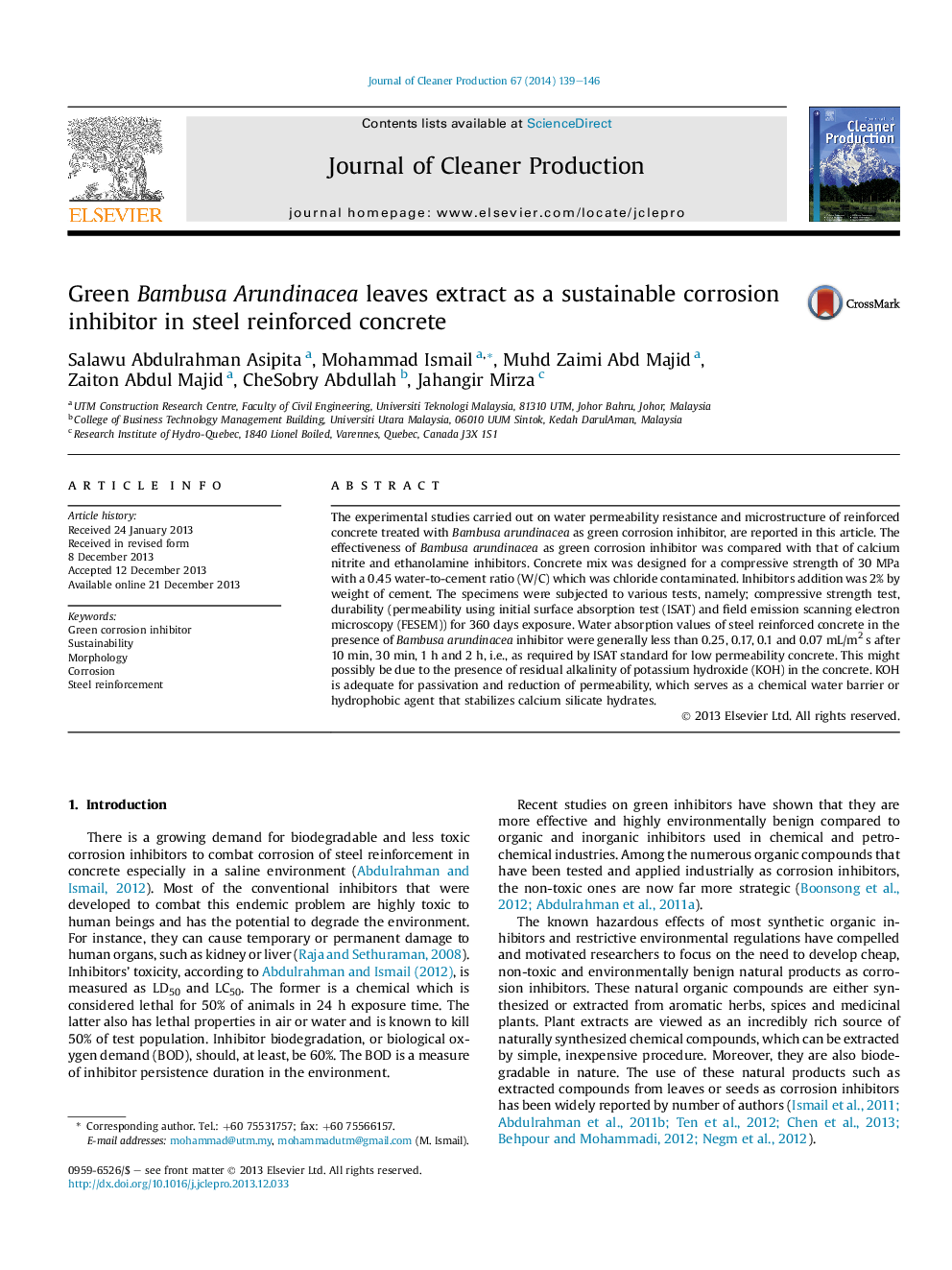| Article ID | Journal | Published Year | Pages | File Type |
|---|---|---|---|---|
| 1744949 | Journal of Cleaner Production | 2014 | 8 Pages |
The experimental studies carried out on water permeability resistance and microstructure of reinforced concrete treated with Bambusa arundinacea as green corrosion inhibitor, are reported in this article. The effectiveness of Bambusa arundinacea as green corrosion inhibitor was compared with that of calcium nitrite and ethanolamine inhibitors. Concrete mix was designed for a compressive strength of 30 MPa with a 0.45 water-to-cement ratio (W/C) which was chloride contaminated. Inhibitors addition was 2% by weight of cement. The specimens were subjected to various tests, namely; compressive strength test, durability (permeability using initial surface absorption test (ISAT) and field emission scanning electron microscopy (FESEM)) for 360 days exposure. Water absorption values of steel reinforced concrete in the presence of Bambusa arundinacea inhibitor were generally less than 0.25, 0.17, 0.1 and 0.07 mL/m2 s after 10 min, 30 min, 1 h and 2 h, i.e., as required by ISAT standard for low permeability concrete. This might possibly be due to the presence of residual alkalinity of potassium hydroxide (KOH) in the concrete. KOH is adequate for passivation and reduction of permeability, which serves as a chemical water barrier or hydrophobic agent that stabilizes calcium silicate hydrates.
